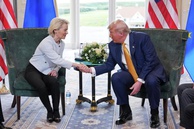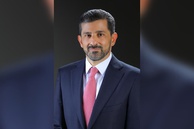On October 22-24 the Russian city of Kazan will be playing host to the 16th summit of BRICS. Over the years of cooperation, the organization has achieved significant results in a number of key areas. In terms of total GDP calculated using purchasing power parity, the BRICS countries overtook the G7 countries already in 2018. [i] According to figures provided by TASS, by the close of 2024, this difference will grow even more, with the BRICS countries projected to account for 36.7 percent of global GDP calculated using purchasing power parity (PPP), compared to 29.6 percent in the G7 countries.
BRICS emerged as the leading non-Western countries’ response to the global financial crisis, as the ineffectiveness of the Bretton Woods institutions had become all too obvious, just as the rapid rise of new economic powers. The world was waking up to the fact that the West’s claims to global economic dominion simply held no water.
"BRICS has become the most representative club expressing these sentiments." However, even though the high potential of the union's members was not in doubt, it had yet to be realized. Based on the results of the first ten years, skeptics even predicted the collapse of the bloc, claiming that the five founding countries did not have "... a common ideology, political system, or even strong ties at the political or economic level."[ii]
The reality turned out to be completely different though. The most important factor behind the consolidation of BRICS was the economic "cold war," which Washington, alarmed by the rise of new centers of power, tried to impose first on China and then on Russia. US and EU attempts to make the rest of the world choose whether they were “for or against” Beijing or Moscow, to isolate Russia and China on the world stage, only alienated the largest and most independent non-Western countries, speeding up the process of their integration. BRICS is thus becoming one of the main "assemblage points."
The 2015 BRICS summit demonstrated the futility of Western attempts to "isolate" Russia. Despite some serious contradictions between some of the new bloc’s members, including geopolitical ones, they start looking eye to eye on a significant list of issues, including common approaches to international problems. The association is increasingly being perceived in the world as an alternative to the "Big Seven." The escalating tensions around Ukraine have only added to this general realization. The previous BRICS summit, held in South Africa, showed that the more pressure the Western countries tried to exert on the bloc’s members, the stronger it became. Amid their increasingly tense relations with the West, BRICS members have rooted for expanding the bloc and deepening cooperation. Dozens of countries have shown interest in joining the organization, which they see as a promising promoter of their interests. More than 40 countries have either applied to join BRICS or expressed interest in doing so. Since January 1, 2024, five more countries (Egypt, Iran, the UAE, Saudi Arabia and Ethiopia) have joined the organization.
Realizing the fact that the United States is using the alliances and institutions that underpin the current world order to contain the rise of non-Western countries, the BRICS members are developing initiatives meant to show that they are all willing to challenge the West’s desire to unilaterally define “universal” rules. Increasingly aware of the harmful effects of US dominance, they are systematically working to create alternative financial and technological platforms that are immune to Washington’s pressure.
Thus, in the face of the politicization of the IMF and the World Bank, BRICS has been working hard to promote financial institutions capable of overcoming Western restrictions on financing development projects in the Global South. In 2014, they established the New Development Bank and the Asian Infrastructure Investment Bank in 2016. The BRICS Contingent Reserve Pool Agreement was signed in 2014, offering foreign exchange credit lines to allow the member states’ financially strained central banks to borrow hard currency. The New Development Bank has already provided about $40 billion worth of loans to finance more than 100 projects. The NDB does not require BRICS membership to participate, and Bangladesh, Egypt, the UAE, Uruguay and Algeria have all joined in over the past three years.
BRICS is actively diversifying relations between its members. In addition to annual summits, there is a growing number of meetings held involving scientists, entrepreneurs, government officials, politicians, and experts from member countries and friendly states. During its chairmanship, Russia helped increase the number of joint working groups several times, thus adding new dynamics and depth to interaction at the interstate level. The number of experts involved in discussions has increased significantly, thus improving the quality of elaboration of issues of interest to the BRICS members and their partners. The summit in Kazan will be the first meeting of the BRICS’ expanded lineup. All members of the group agree that the world is moving from unipolarity, led by the United States, to multi-polarity, and the balance of power in the international system is now determined by competition between several centers of power. They also agree that attempts to preserve a hegemonic international system pose a threat to international rules and norms, as well as global stability. Even though the interests of some of its members may differ in certain areas, BRICS is seen by its participants and the countries that seek to join it as a key structure capable of exerting a constructive influence on these processes.
Washington’s attempts to impose its agenda on the world through Western alliances are prompting more and more countries to look for an effective balance of economic power. A year ago, the British magazine The Economist wrote that BRICS could become a real counterweight to the G7, since the Shanghai Cooperation Organization is “too oriented toward Eurasia,” and “the significance of Western participants [in the G20] is too great.” Therefore, for a number of America’s current nominal allies, joining BRICS fits into their efforts to restructure relations with the United States and gravitate closer to Russia and China. While the big countries of the Global South are striving to play an independent role, they also want to join an association capable of talking on equal terms with the West on any hot button international issue. In June 2022, the G7 tried to present the world with an “alternative” to the burgeoning BRICS, announcing the launch of the Partnership for Global Infrastructure and Investment (PGII). However, Western initiatives are quite general, if not abstract. The rhetoric about “new strategic corridors” and “new paths” of cooperation is rarely followed up with specific projects. Moreover, these initiatives are designed, directly or covertly, by the need to sever the countries’ economic and financial ties with China and, in recent years, Russia. Observers wonder just what the US and EU might have to do to persuade other countries to abandon mutually beneficial projects with major economic partners simply because “Western countries do not like them.”
One should not forget about the difficult financial and economic situation most of the G7 countries now have to deal with. The IMF predicts that by the end of this year Japan's public debt will jump to almost 255 percent of GDP, Italy's to 139, the United States' to 123, and France's to almost 112 percent of GDP. The level of public debt will exceed 100 percent of GDP in Canada and the UK - also members of the G7. Of all the G7 countries, only Germany has a public debt-to-GDP ratio of less than 70 percent. For comparison, China's public debt is 77 percent of GDP, India's is 83 percent, Brazil's is 85 percent, and Russia's is a mere 20 percent of gross product. [iii]
Overall, BRICS has a high potential for becoming the basis of "...a new world order," since the association is capable of "...offering other countries of the world economy new paradigms for global development. Such trends in the new global economic architecture may include a restart of globalization based on a new platform of countries and regions, the creation of a new institutional system for the modernization of countries in the global economy, the creation of a new pool of reserve currencies from emerging markets, the creation of a track alternative to the Western format of global economic development, and the creation of new regional blocs and platforms for their coordination and development.” [iv]
The processes of global governance are going through a profound, systemic transformation. Institutions that lack the shortcomings of the current, increasingly formalized and rigid structures are coming to the fore. BRICS is perceived by its participants as a partnership on strategic issues, aimed at cooperation and finding solutions to global development problems that are beneficial for all. Another thing that makes BRICS attractive to others is the absence of an ideologically determined agenda, inclusiveness and equal consideration of the interests of all participants, the absence of requirements for the adoption of formal obligations of a non-economic nature. The association does not try to impose a rigid "universal" agenda on other countries. Instead, it acts using methods of "soft balancing, through the formulation of norms of sovereignty, trade, development and other aspects of international law." The agenda proposed by BRICS attracts a growing number of countries around the world. The evolution of the existing world economic order is an objective fact that requires new international institutions. BRICS is the most influential and promising association of the new generation. Since BRICS’ very inception, its members have consistently been working to transform the existing international system of economic relations. As a result, the dynamics of the BRICS countries' development clearly demonstrate how the redistribution of global economic power from the West to the majority of the world countries is taking place.
The views of the author are his own and may differ from the position of the Editorial Board.
-----------------------------------------------------------------------------
[i] https://www.statista.com/statistics/1412425/gdp-ppp-share-world-gdp-g7-brics/
[ii] https://inosmi.ru/20200828/248020112.html
[iii] https://www.imf.org/external/datamapper/GG_DEBT_GDP@GDD/CAN/FRA/DEU/ITA/JPN/GBR/USA
[iv] https://russiancouncil.ru/analytics-and-comments/analytics/briks-kak-osnova-novogo-miroporyadka-kakovy-perspektivy/
read more in our Telegram-channel https://t.me/The_International_Affairs

 12:34 10.10.2024 •
12:34 10.10.2024 •



























